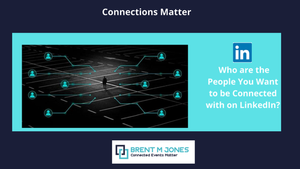8 Common Mistakes on LinkedIn Profiles
-
1. Bad Photo Don’t overdress but do dress well. This is you, and it needs to be a good photo. You probably don’t need a tie in your image if you don't wear a tie at work.
2. Behind the Photo Banner - This space can be blank, but why not make it a good reflection of your professional image? Type your professional title, add “LinkedIn Banner” to the name, and hit enter on Google. Next, shoot “images” and choose from various possible photos that will emphasize this identity. The background banner photo you choose should reinforce who you are (Who you want to be in your next job) and visually support the written portions of your profile, including the “About Statement.” This image should include communication of your overall value, skills, career focus, and professional identity.
3. Bad Headline - The title of your current job automatically goes under your name if you’re still working, and changing this might tip off your current employer that you’re looking. This may be a logical place to add a passion statement about what you like about your field of work. If you are unemployed, you can list job titles you might consider, which can serve as additional valuable keywords for the algorithms. It can open doors to jobs that even algorithms might not find from your experience section.
4. Weak or missing “About Statement” - A statement capturing your general title and what and how you can do what you do. Rather than saying you’re a “Director of Annuity Insurance Sales,” it would be better to say “Experience Insurance Industry Sales,” for example. Your title should reflect your focus on what could be ahead for you. This title is the total of the many parts over your career years.



